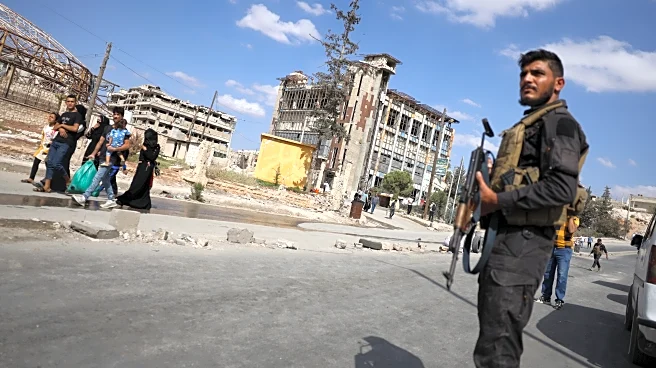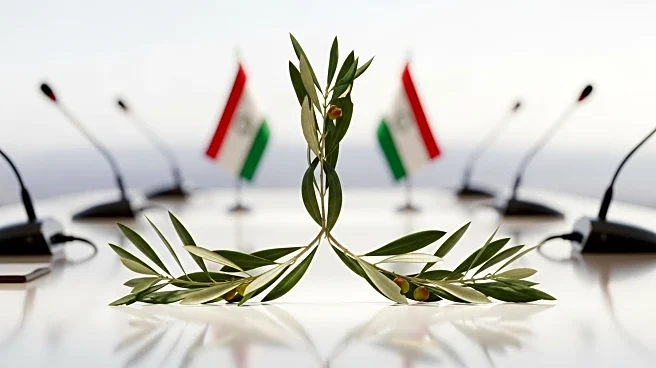What's Happening?
A cautious calm has been reported in Aleppo, Syria, following overnight clashes between Syrian government forces and the Kurdish-led Syrian Democratic Forces (SDF). The violence erupted as tensions escalated between the central government in Damascus and Kurdish authorities in the northeast. According to the Syrian state-run news agency SANA, the SDF targeted checkpoints of the Internal Security Forces, resulting in one death and four injuries. The SDF, however, denied these attacks, stating that their forces had withdrawn from the area months ago. A ceasefire has been declared, although details remain sparse. The conflict is part of a broader struggle for control, with Damascus seeking to consolidate power across Syria, while the SDF aims to maintain autonomy in the northeast. Recent parliamentary elections were held in most of Syria, excluding SDF-controlled regions.
Why It's Important?
The ceasefire agreement is significant as it highlights the ongoing power struggle in Syria, with potential implications for regional stability. The Syrian government's efforts to consolidate control could lead to further tensions with Kurdish forces, who are backed by the U.S. and seek autonomy. This development could impact U.S. foreign policy and military strategy in the region, as the U.S. has historically supported the SDF in its fight against ISIS. The situation also affects local populations, as clashes have led to civilian casualties and displacement. The outcome of this ceasefire could influence future negotiations and the broader geopolitical landscape in the Middle East.
What's Next?
The implementation of the ceasefire will be closely monitored by international stakeholders, including the U.S. and regional powers. The success of the ceasefire could pave the way for further negotiations between the Syrian government and Kurdish forces. However, if the ceasefire fails, it could lead to renewed hostilities and further destabilization. The international community may need to intervene diplomatically to ensure a lasting peace. Additionally, the stalled integration of SDF forces into the Syrian army remains a critical issue that could affect the ceasefire's longevity.
Beyond the Headlines
The ceasefire agreement raises questions about the future of Kurdish autonomy in Syria and the role of external powers in the region. The SDF's relationship with the U.S. and other allies could be tested if the Syrian government continues to assert control. The situation also highlights the complex dynamics of post-conflict reconstruction and governance in Syria, as various factions vie for power and influence. The humanitarian impact on civilians caught in the crossfire remains a pressing concern, with potential long-term effects on the region's stability and development.












